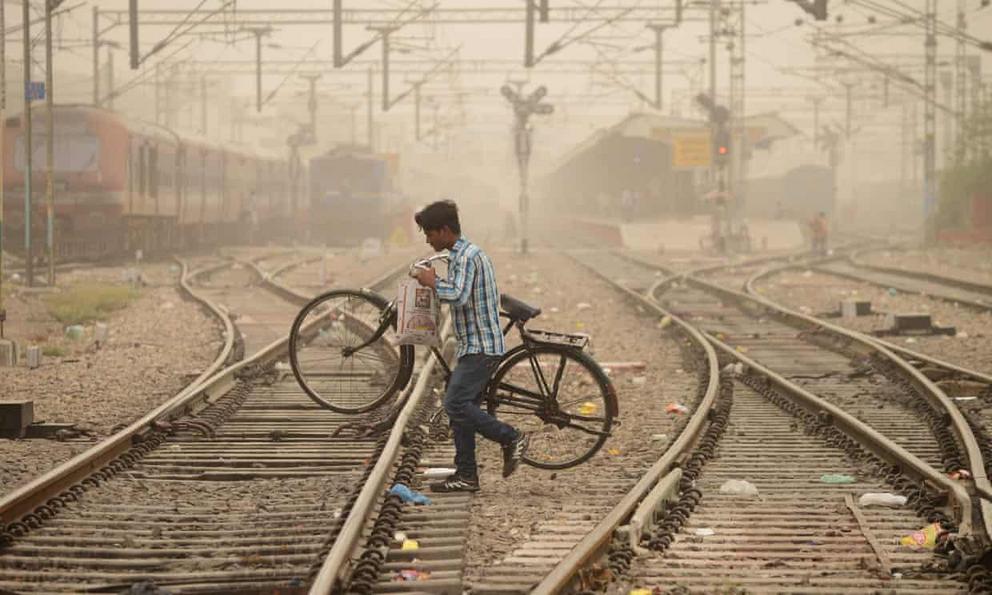India to build 1,900 miles of walls along railways to cut track deaths
Railways ministry hopes barriers will help prevent thousands of deaths each year
A commuter crosses tracks in Jalandhar, Punjab. India’s rail network runs about 12,000 trains every day. Photograph: Shammi Mehra/AFP/Getty Images
India plans to build 1,864 miles of walls along its railways in an attempt to cut the tens of thousands of deaths that occur from people being hit by trains each year.
The railways ministry says it will build a 2.7 metre high reinforced concrete barrier along residential sections of the sprawling network.
The Indian Express newspaper said the ministry made the decision after 61 people were killed by a train in Punjab state during celebrations for the Hindu festival of Dusshera.
The incident, video of which was broadcast nationally and shared widely on social media, sparked questions over why people were permitted to gather on a live railway track.
Nearly 49,800 people died after being hit by trains in the last three years, according to the railways ministry. Officials have speculated that many of the victims could have been distracted by their phones.
India’s railways run about 12,000 trains every day, carrying more than 23 million passengers – more than the populations of Finland, Slovakia, Norway and Ireland combined.
The ageing network is underfunded. More than 33,700 people died in train-related accidents in 2015, the most recent year national data has been published, most by falling from overcrowded trains or being hit along the tracks.
On Mumbai’s suburban train network, 18,847 people died between January 2013 and August this year, according to police data.
A 2012 government report described the annual death toll on the railways as a “massacre”, but the Indian government has argued the figures are proportionally in line with other countries – and higher overall due to the sheer size of the network and number of passengers.
The railways department had already begun building more than 1,000 miles of concrete barriers, but said work had been slowed by locals who objected to the construction. Material from the walls, such as bricks or iron, was also a target for thieves.
There was a fence near where the Dusshera tragedy occurred but revellers had scaled it and entered through a level crossing to get a better view of the festival.

